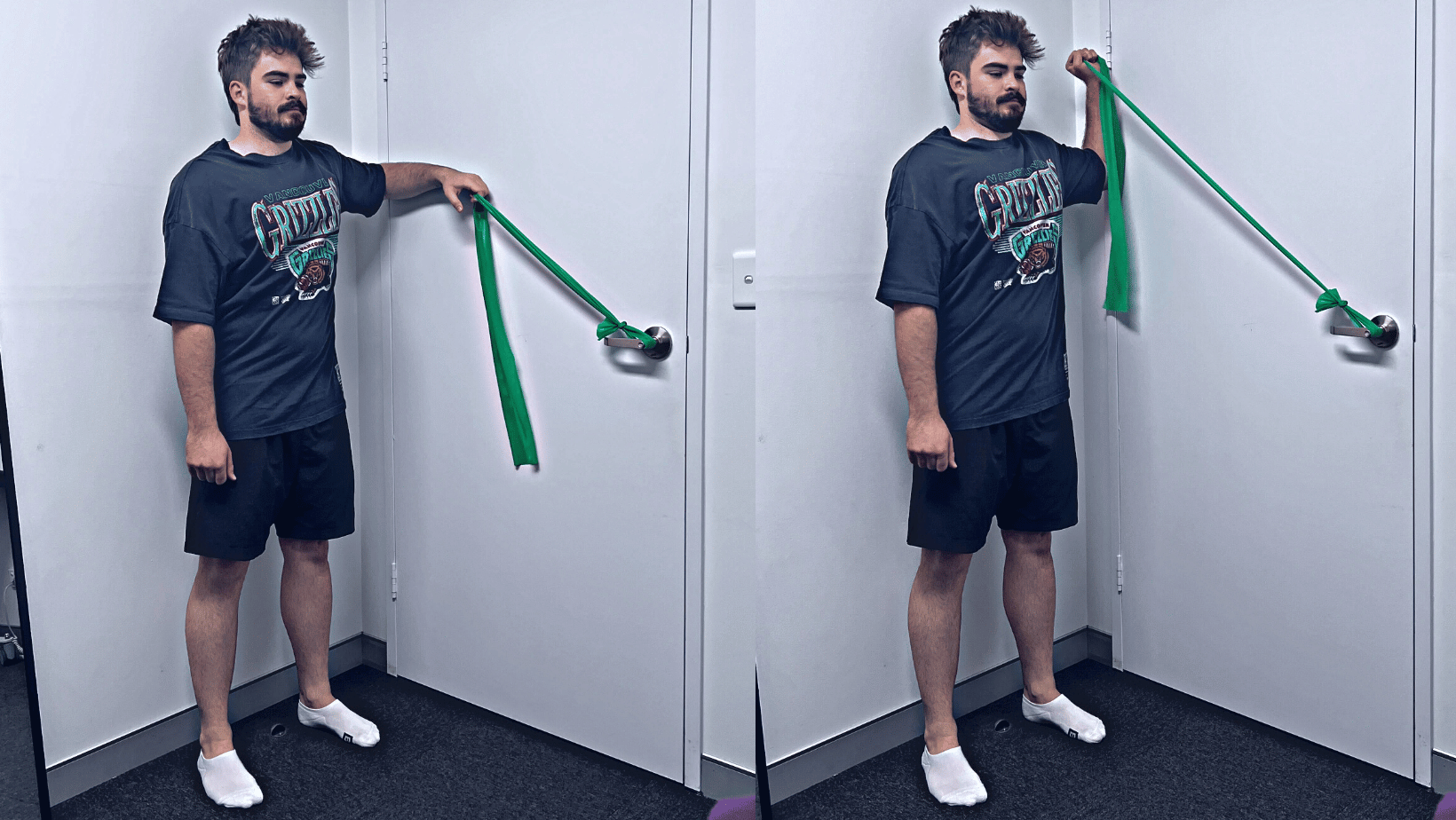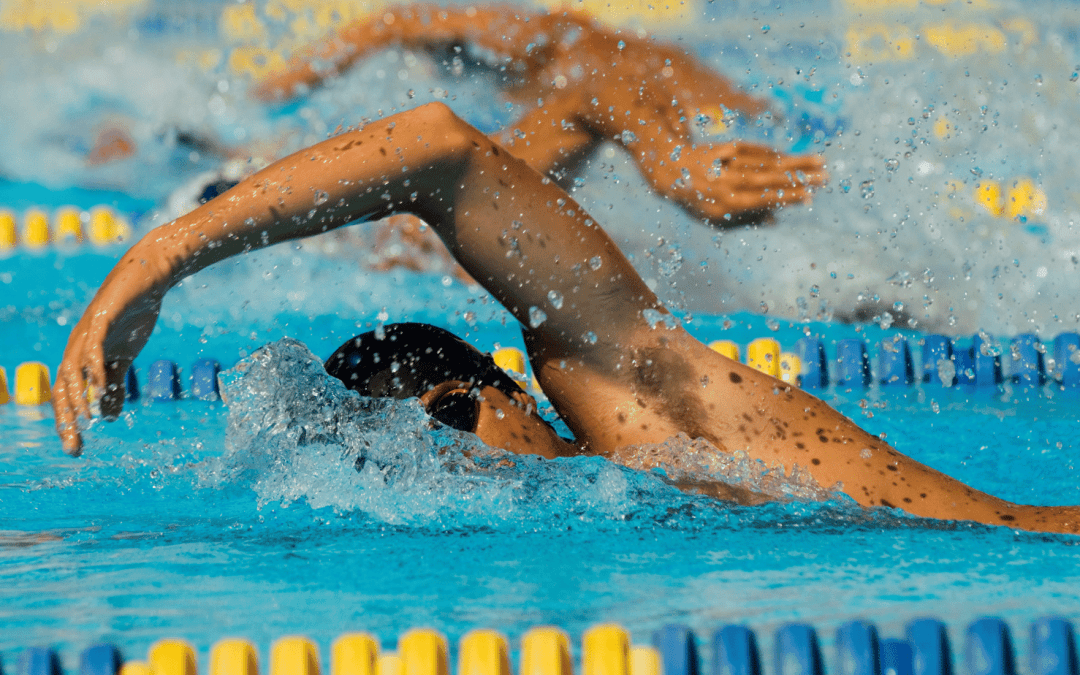Swimmer’s Shoulder is a term often used to describe a range of painful shoulder overuse injuries due to the constant overhead arm movements in regular swimmers. Interestingly, up to one third of shoulder injuries occur during sporting activities (Enger et al., 2019). Swimmer’s shoulder is typically characterized by symptoms including pain and inflammation in the anterior lateral aspect of the shoulder. While its common clinical diagnosis is a shoulder impingement or rotator cuff tendinopathy, this condition can also manifest as labral injuries, muscle dysfunction and shoulder instability. If left untreated, swimmer’s shoulder can lead to rotator cuff tears, ligament and capsule damage, bursitis, and cartilage damage. Sports physiotherapy can assist in alleviating pain and treatment for sports injury.
Signs and Symptoms
Early identification of symptoms is crucial for effective treatment:
- Pain radiating pain down arm, anterior shoulder pain, deep shoulder pain, pain aggravated by overhead reaching/movements or after swimming
- Decreased swimming endurance
- Reduced shoulder range of motion or stiffness
- Reduced strength
- If there is an Increase in laxity of joint, instability may be present.
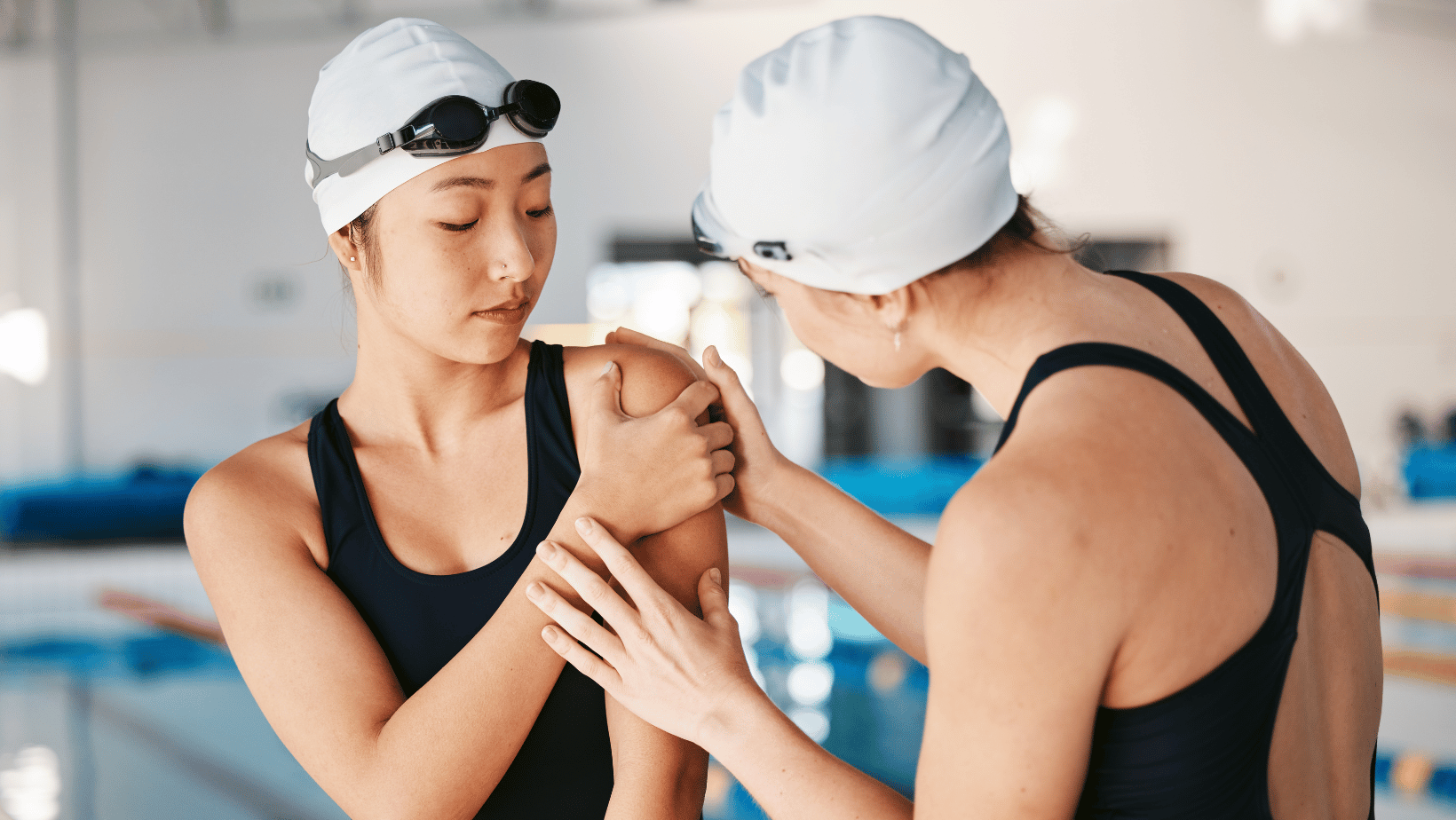
Contributing Risk Factors
As identified by Struyf et al. (2017), the development of swimmer’s shoulder arises from an array of contributing factors:
- Repetitive overuse – placing constant strain on their muscular and bone structures. Over time this can lead to wear and tear or degenerative changes in the shoulder.
- Poor biomechanics or swimming technique – such as a lack of postural control, poor core activation or a lock of thoracic rotation.
- Muscle imbalance or dysfunction – weakness in muscles around the shoulder, especially the rotator cuff muscles.
- Anatomical variants – like acromion space narrowing.
Physiotherapy Assessment and Treatment
Five Dock Physiotherapy’s comprehensive approach to managing swimmer’s shoulder begins with a detailed assessment. Our goal is to identify the root cause of the problem, not just to alleviate symptoms. Assessment includes:
- A detailed subjective history to understand the onset and nature of symptoms and the aggravating activities. This assists us in determine the goals of the patient.
- Physical examination of the shoulder’s range of motion, strength, and stability.
- Specific tests to identify impingement, rotator cuff issues, labral pathology or instability.
- Analysis of biomechanical technique and training habits. This may include video analysis of swimming technique.
- In our clinic we use the AxIT for strength and endurance testing. This measures muscle symmetry, activation and power between shoulders as well as the strength ratio of internal to external rotators of each shoulder’s rotator cuff.
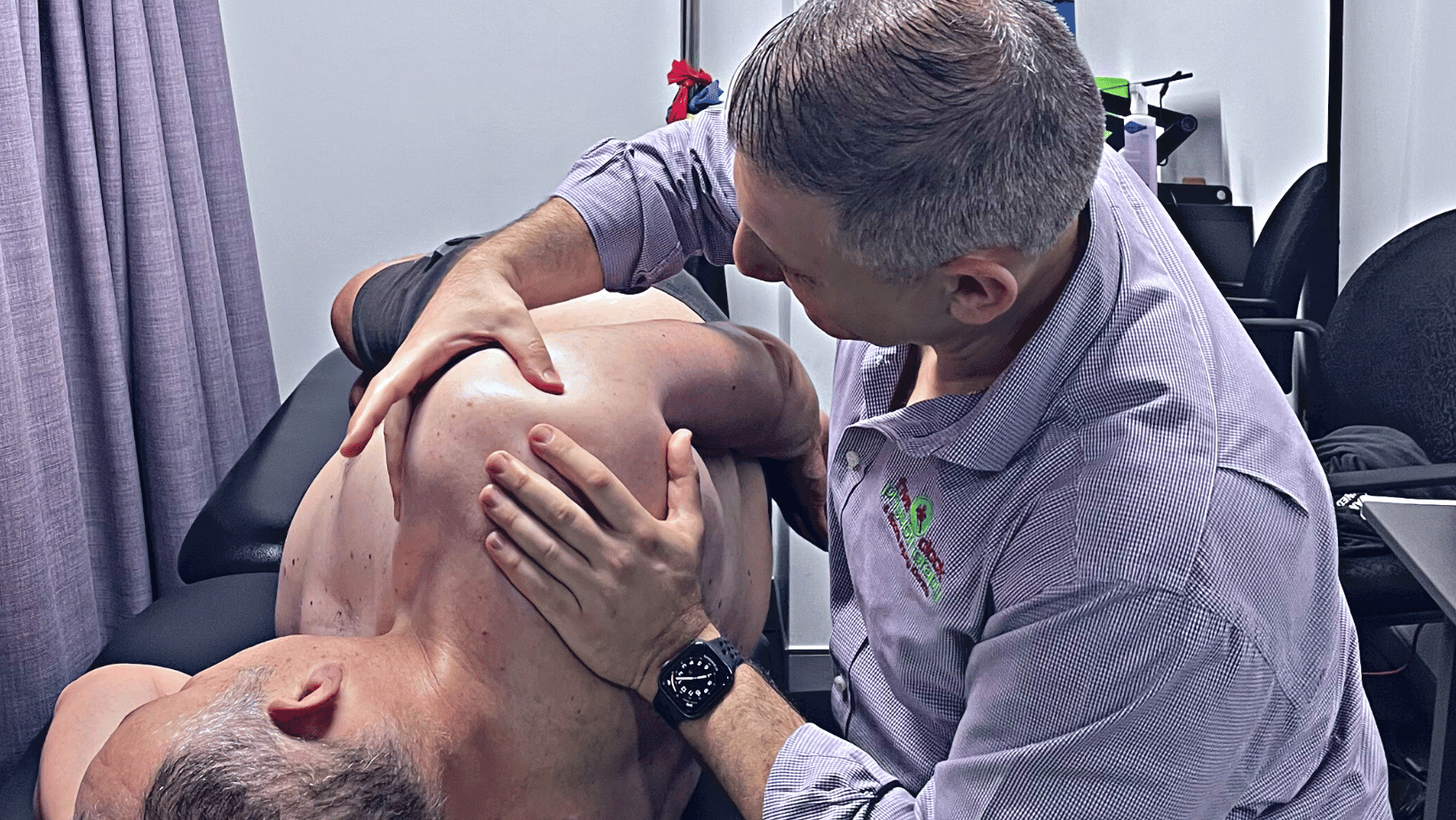
Physiotherapy treatment and rehabilitation is critical in reducing pain, improving shoulder biomechanics and strength whilst preventing future issues. Rehabilitation needs to address the multidimensional aspect of the injury with exercise prescription that is based on functional performance and incorporates multi joint exercises (Wright et al., 2016).
- Pain Management: A research review conducted by Bhardwaj et al,. (2023) suggest utilising ice, soft tissue releases, dry needling and medication/NSAIDs as required.
- Restoring Range of Motion: Soft tissue releases and joint mobilisation assists with improving movement as does addressing impairments through exercises that improve shoulder movement patterns, flexibility, joint mobility, scapulohumeral rhythm, and muscular activation patterns.
- Muscle Strengthening: Focusing on scapular stabilisation and rotator cuff strengthening through full range of motion is imperative. Tavares et al., (2022) report that strengthening programs in clinic should be performed for at least 6 weeks. Using a variety of exercises can help restore proprioceptive feedback and stimulate functional movement patterns to mitigate the risk of future injuries (Struyf et al., 2017).
- Technique Correction: Education and analysis with the aim to refine stroke technique and body positioning is critical. This is often done in conjunction with the swimmers coach and we will often use video analysis to assist.
- Addressing Kinetic Chain/Biomechanical Elements: Ensuring other areas such as the cervical and thoracic spine have enough mobility as well as ensuring the core stabilisers and lower limb strength is adequate so that compensations are not present. “Weak core inhibits shoulder muscles, which is a major risk factor for shoulder instability and Swimmers Shoulder” (Abdelmohsen et al, 2021)
Evidence
Recent studies, such as those by Struyf et al. (2017) and in the Journal of Physiotherapy (2021), have underscored the efficacy of individualised exercise programs in managing conditions like swimmer’s shoulder. Our clinic integrates these evidence-based practices to ensure the most effective treatment and prevention strategies.
Swimmer’s shoulder, while a common issue among swimming enthusiasts, is both preventable and treatable. Our clinic is dedicated to offering comprehensive, evidence-based physiotherapy services to address and prevent these injuries.
Exercises
Swimming ploughs on reformer
Aim: Strengthen the postural muscles in functional way
How: Lying on the long box on the reformer facing down, have your chest off the edge of the box and straps in the hand. Start with your arms straight facing down to the ground and your shoulder blades squeezed. Keeping the arms straight, extend your arms past your body while keeping your chest out. Pause at the top and return the straps to the starting position.
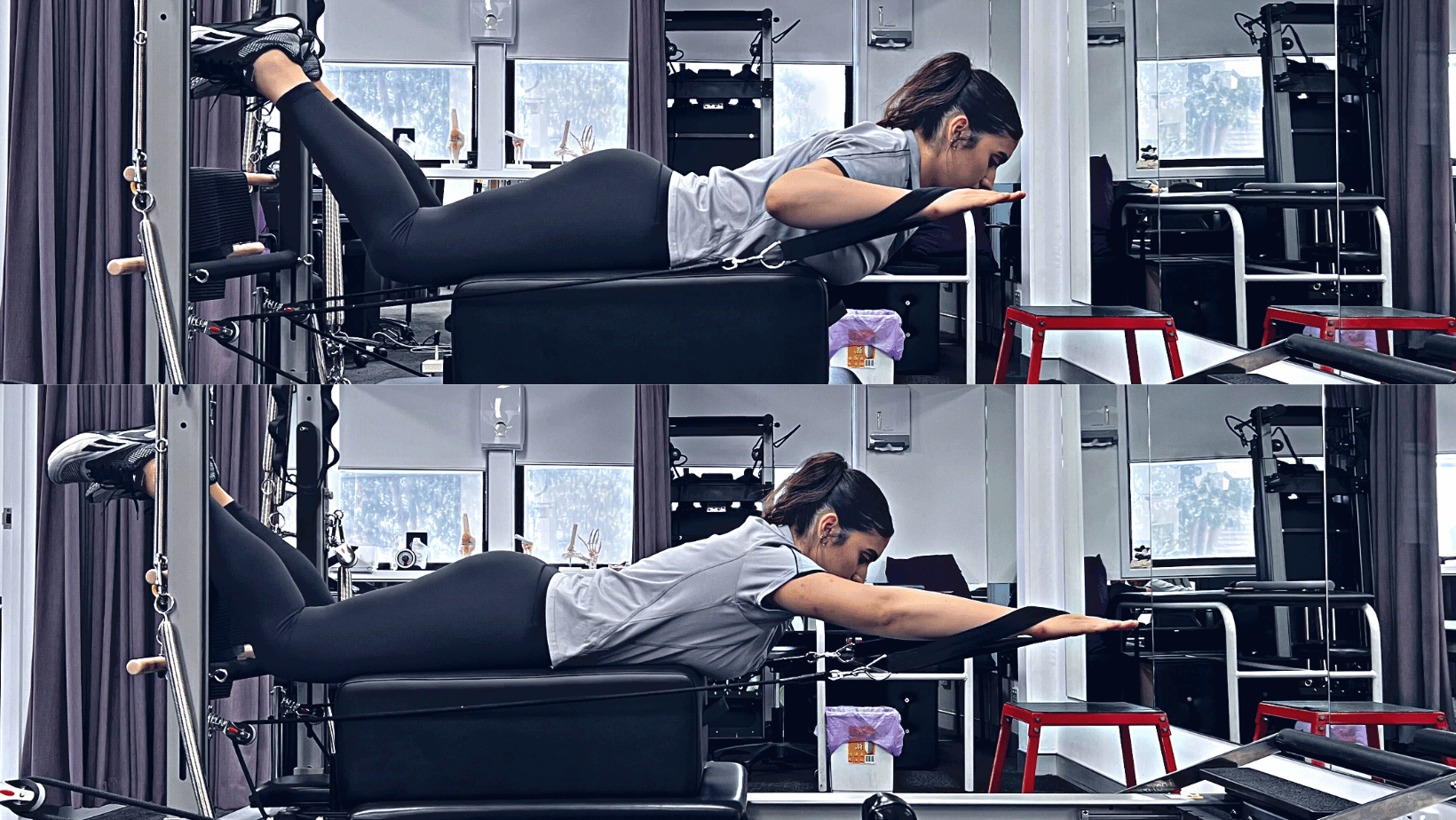
Pec minor stretch
Lumbar Spine and Gluteal Stretch
Aim: Stretch and lengthen the muscles that attach to the front of the shoulder
How: Find the corner of a wall or a doorway. Place the affected arm at a 90 degree angle against wall with your hands facing in. Lean forward slightly until you feel a stretch in your chest. Hold for seconds.
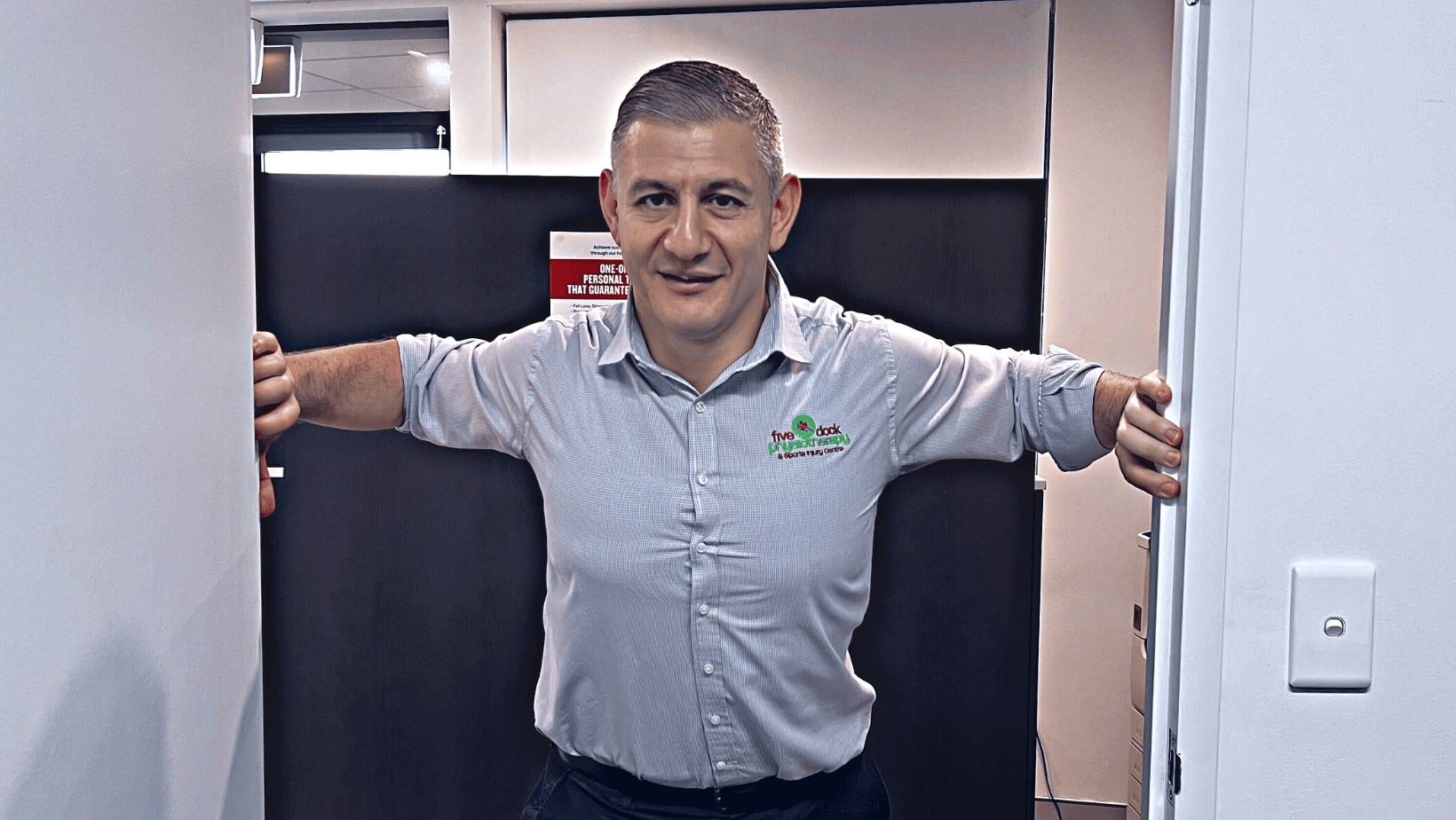
Theraband Strengthening at 90⁰ abduction
Aim: Improve rotator cuff strength in a functional range
How: Attach a theraband to a door handle. With the arm abducted to shoulder height and the elbow bent to 90 degrees, pivot from the elbow, pulling away from the resistance band targeting the external rotators.
